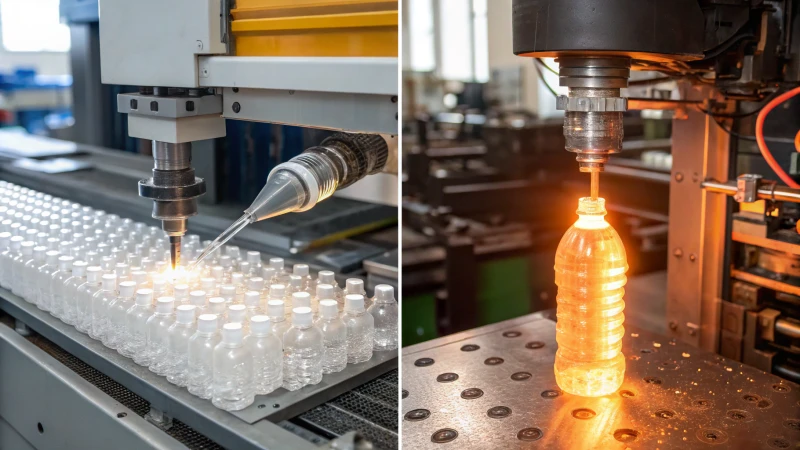
Ever wondered how sprayer bottles come to life? It all starts with choosing between injection and blow molding.
Injection molding crafts precise parts like bottle caps and pump heads by injecting molten plastic into molds. Blow molding, on the other hand, shapes lightweight, hollow bottle bodies by expanding heated plastic. Together, they create sprayer bottles that are both functional and appealing.
I remember the first time I visited a factory where these processes were in action. It felt like watching an intricate dance of machines, each playing its part to perfection. Injection molding is like a sculptor with a keen eye for detail, crafting perfect caps and pump heads that ensure nothing leaks out. Meanwhile, blow molding is the magician, transforming plastic into lightweight yet sturdy bottle bodies. Together, they create a symphony of precision and efficiency. Understanding these techniques not only gave me a new appreciation for the everyday products we often overlook but also helped me make more informed decisions in my business.
Injection molding creates bottle caps and pump heads.Echt
Injection molding is used for precise parts like caps and pump heads.
Blow molding is unsuitable for making hollow bottle bodies.Vals
Blow molding is ideal for creating lightweight, hollow bottle bodies.
How does injection molding enhance product precision and sealing?
Ever wondered how injection molding turns a simple idea into a precision-crafted product?
Injection molding boosts precision and sealing by shaping molten materials into exact forms, ensuring detailed, stable parts. This technique guarantees tight fits and leak-proof capabilities, essential for product quality.
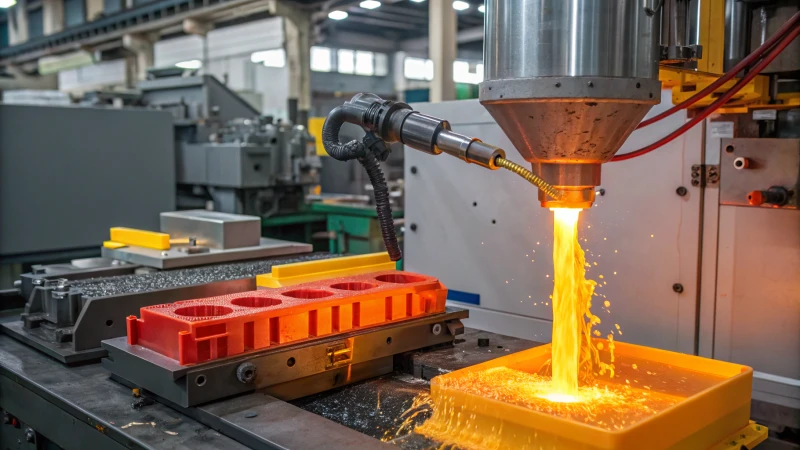
The Science Behind Injection Molding
Imagine creating a masterpiece with every detail meticulously in place. That’s what injection molding is all about. It’s like making a chocolate mold: you pour the melted chocolate into a mold, let it cool, and voila! You’ve got a perfectly shaped treat. Similarly, with injection molding, molten plastic fills every nook and cranny of a precision mold, cooling to form a highly detailed and consistent part1. I once watched this process transform a simple sketch into a tangible reality, and it was nothing short of magic.
Precision Engineering and Design
Precision is the heart of injection molding. Think of the intricate parts you see on bottle caps or pump heads. These are crafted with such fine detail, allowing for tight tolerances—meaning there’s minimal room for error. I remember visiting a factory and marveling at how these tiny components fit together flawlessly, like pieces of an elaborate puzzle where accuracy is paramount for components2.
Ensuring Airtight Seals
Imagine needing to keep your favorite lotion from leaking out of its container. Injection molding plays a crucial role here by ensuring that every part fits tightly together, reducing gaps and preventing leaks. This is vital in products like medical devices3 or cosmetic containers where integrity is non-negotiable.
Material Selection and Compatibility
Choosing the right material is like selecting the perfect ingredient for a recipe—it can make or break the dish. In injection molding, materials are selected based on specific properties, like chemical resistance or flexibility. I recall working on a project where we had to choose plastics that wouldn’t degrade when in contact with various liquids, ensuring that seals remained intact.
| Type materiaal | Property |
|---|---|
| Medical-grade PP | Corrosion-resistant |
| High-strength ABS | Durable under stress |
| Flexible PVC | Adaptable to design needs |
Integrating Advanced Technologies
With advancements like hot runner systems, injection molding has reached new heights. These systems ensure even material flow, minimizing defects such as weld marks or bubbles that could compromise product quality4. I’ve seen firsthand how these technologies maintain the aesthetic and functional qualities of molded products, ensuring high-quality outcomes across industries.
Understanding these facets helps manufacturers leverage injection molding to enhance precision and sealing, delivering products that meet the highest standards of quality.
Injection molding ensures airtight seals in products.Echt
Injection molding produces parts with precise dimensions, ensuring tight fits.
Material choice in injection molding affects product durability.Echt
Selecting materials with specific properties enhances product longevity and performance.
What Are the Advantages of Blow Molding for Lightweight Bottles?
Ever wondered how those lightweight bottles on your bathroom shelf are made?
Blow molding is a game-changer for manufacturing lightweight bottles. By heating and inflating plastic into molds, it offers cost-efficiency, flexibility in design, and uses less material, making it a sustainable choice for mass production.
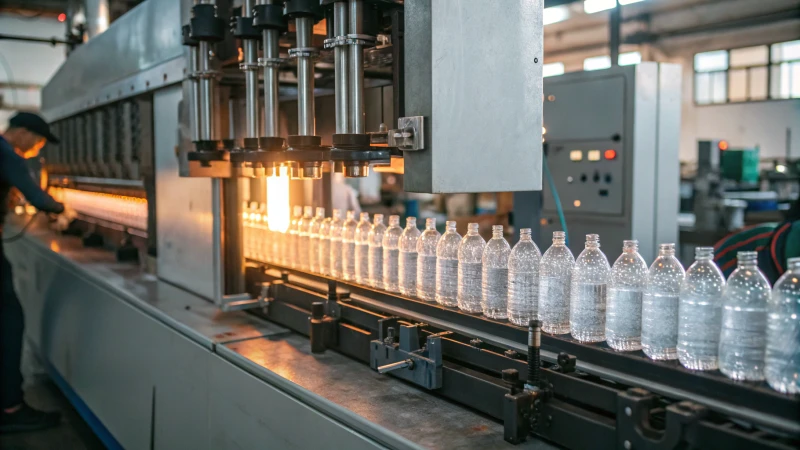
The Process of Blow Molding
Imagine, for a moment, the fun you had as a kid blowing up balloons. That thrill as the balloon expands under your breath is precisely what blow molding is like. This process starts with heating plastic until it’s soft and pliable. Then, just like blowing air into a balloon5, air is blown into the plastic, which expands to fit the mold, forming hollow bottles. It’s this magic of transformation that turns simple plastic into everyday items like shampoo bottles or water containers.
Key Advantages of Blow Molding
| Advantage | Beschrijving |
|---|---|
| Cost-Efficiency | By using less plastic than other methods like injection molding, it cuts down production costs significantly. This not only makes it an economical choice but also supports sustainability by reducing waste. |
| Design Flexibility | Allows manufacturers to create bottles in just about any shape or size imaginable. Whether it’s a sleek round bottle or an edgy square one, blow molding can do it all. Plus, it offers options for color and texture customization. |
| Environmental Impact | Efficiently uses materials and incorporates recycled plastics, playing a crucial role in sustainable manufacturing. Lightweight bottles mean less energy required for transportation, reducing carbon footprints significantly. |
Cost-Efficiency in Blow Molding
One of my favorite aspects of blow molding is how it champions efficiency. By using less plastic than other methods like injection molding, it cuts down production costs significantly. This not only makes it an economical choice but also supports sustainability initiatives6 by reducing waste. I’ve seen firsthand how this can boost profit margins while keeping environmental impact low—a win-win!
Design Flexibility and Versatility
If you’ve ever admired the intricate design of a bottle, it’s likely thanks to blow molding. This process is incredibly versatile, allowing manufacturers to create bottles in just about any shape or size imaginable—whether it’s round, square, or any unique shape—this process allows manufacturers to cater to specific product needs. The flexibility extends to color customization7 and texture variations, enhancing brand differentiation.
Environmental Impact and Sustainability
What I love most about blow molding is its alignment with eco-friendly goals. By efficiently using materials and incorporating recycled plastics in the process further aligns with sustainable practices. The creation of lightweight bottles means less energy consumption during transportation8, significantly reducing carbon footprints.
Blow molding isn’t just a method—it’s a strategy for smarter production that meets modern demands for cost-effectiveness and sustainability. Embracing this technique allows companies to innovate while being environmentally conscious.
Blow molding reduces production costs.Echt
Blow molding uses less plastic, lowering costs compared to other methods.
Blow molding limits design options.Vals
Blow molding allows complex shapes and sizes, enhancing design flexibility.
How do injection and blow molding processes work together?
Ever wondered how a simple spray bottle keeps everything intact? It’s a fascinating dance between injection and blow molding techniques that makes it happen.
Injection molding is the maestro behind crafting precise parts like bottle caps, ensuring everything clicks perfectly. Blow molding, on the other hand, shapes lightweight, hollow bodies for bottles. Together, they create robust, visually appealing packaging that’s both functional and beautiful.
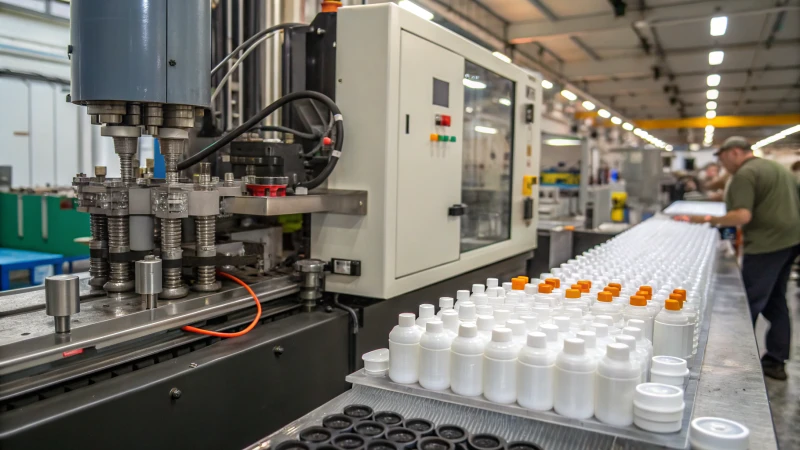
A Closer Look at Injection Molding
I remember the first time I saw an injection molding machine in action. It was like watching a pastry chef expertly fill molds with chocolate, except here, the molds were filled with hot plastic. The precision was mesmerizing. Injection molding is all about creating those intricate parts—think of every tiny thread on a bottle cap or the complex structure of a pump head. It’s this precision that makes it so valuable.
Typical Products:
| Product | Core Advantages |
|---|---|
| Bottle Caps | Precision, Durability |
| Pump Heads | Complex Structures |
| Threaded Parts | Leak-Proof Sealing |
Understanding Blow Molding
Blow molding always reminds me of childhood balloon animals. You start with a simple shape, then expand it into something both functional and fun. In the world of manufacturing, blow molding stretches heated plastic to form hollow containers, perfect for products that need to hold larger volumes without weighing much.
Features of Blow Molding:
- Lightweight
- Low cost
- Flexibility in shape and design
Common Applications:
| Product | Key Benefits |
|---|---|
| Shampoo Bottles | Lightweight, Spacious |
| Detergent Bottles | Cost-Effective |
| Water Bottles | Ergonomic Design |
The Harmonious Duo in Packaging
In my experience with Beautipak, combining these techniques feels like a symphony—each process has its role, and together they create something truly remarkable. Injection molding provides the precision needed for sealing components, while blow molding delivers the bulk of the structure. Imagine a spray bottle; its entire functionality relies on this complementary relationship.
The Assembly Process:
- Injection Molding: Craft precise necks and caps.
- Blow Molding: Form the bottle’s body.
- Assembly: Merge both parts for a complete product.
\quality and durability9 are crucial for industries like skincare where packaging integrity can make or break a product.
\fully-integrated packaging10 solutions ensure seamless production processes.
\crafting chocolate molds11 highlights the artistry involved in injection molding.
\blowing a balloon12 captures the essence of blow molding’s transformative nature.
\\The interplay ensures quality and durability essential in industries like skincare and cleaning supplies where packaging integrity is crucial.
\\This partnership ensures quality and durability13, which is crucial for industries like skincare where packaging integrity can make or break a product.
\\Combining both techniques allows manufacturers to produce fully-integrated packaging14 solutions.
n### Why Choose Dual-Process Suppliers?
nOpting for suppliers who excel in both processes is like finding a one-stop shop for all your needs—it’s efficient and often more cost-effective. With everything under one roof, there’s less room for misalignment or material mishaps, leading to more consistent quality and competitive pricing.
Injection molding is used for making bottle bodies.Vals
Injection molding creates precise parts like caps, not hollow bodies.
Blow molding forms lightweight, hollow containers.Echt
Blow molding expands plastic with air to create hollow items.
Why Should You Choose a Supplier with Dual Process Capabilities?
When I first discovered the magic of dual process capabilities in manufacturing, it felt like uncovering a secret that could revolutionize my business.
Choosing a supplier with dual process capabilities like injection and blow molding ensures consistent quality, cost savings, and streamlined production, making it a strategic move for businesses focused on efficiency and excellence.
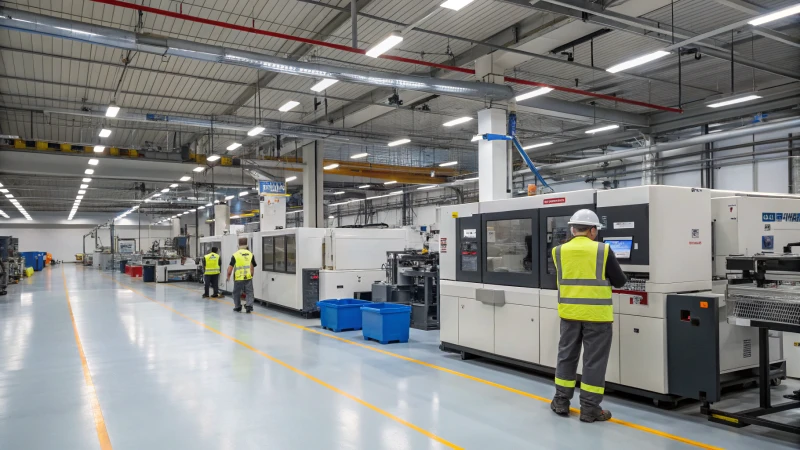
Understanding Dual Process Capabilities
Imagine my surprise when I learned about dual process capabilities during a trade fair. It’s like finding a one-stop-shop that can handle both injection molding15 and blow molding16 under the same roof. This means you get detailed precision parts and lightweight structures all seamlessly integrated.
-
Injection Molding: Think of it as crafting the perfect chocolate mold. You inject molten plastic into a mold, similar to pouring chocolate into a form, resulting in high-precision parts like bottle caps.
-
Blow Molding: It’s akin to blowing up a balloon, where heated plastic is expanded into hollow shapes like bottles. This process is ideal for creating lightweight, cost-effective containers.
| Process | Example Products | Key Advantages |
|---|---|---|
| Injection Molding | Bottle Caps | High Precision, Detail Clarity |
| Blow Molding | Bottle Bodies | Lightweight, Cost-effective |
Benefits of Choosing a Supplier with Dual Processes
1. Consistency in Quality
Keeping everything under one roof ensures that each component fits perfectly, minimizing errors. I’ve seen firsthand how mismatches can cause headaches when dealing with separate suppliers.
Cost Efficiency and Control
By reducing the number of suppliers, I’ve found it easier to manage costs and logistics. This streamlining avoids the unnecessary expense hikes that come from managing multiple vendors.
Combining these processes can lead to more cost-effective production17.
Streamlined Supply Chain Management
Having a single supplier to manage both processes really smooths out the production line. It cuts down on lead times and potential delays, which is crucial during peak seasons.
Dual process capabilities can significantly streamline supply chain operations18.
Enhanced Product Quality
Combining injection and blow molding can significantly enhance the final product’s quality. For instance, ensuring a spray pump fits perfectly on its bottle is vital for preventing leaks. I’ve learned that attention to such details can make or break a product.
Explore how dual process capabilities enhance product quality by ensuring that every component is meticulously crafted and assembled to meet high standards.
Industry Trends and Future Outlook
The shift towards dual process capabilities aligns with the growing demand for sustainable manufacturing. More companies are turning to recyclable materials to meet environmental standards while keeping an eye on quality and cost-effectiveness.
Companies are looking at innovative materials19 like recyclable plastics to meet environmental standards while maintaining quality and cost-efficiency.
Smart manufacturing technologies are reducing errors and boosting precision. This trend further supports why dual process capabilities are becoming essential in today’s market.
Every time I review my suppliers, I consider these factors to ensure my business remains at the forefront of quality and innovation.
Dual process capabilities enhance product quality.Echt
Combining injection and blow molding ensures superior sealing and fit.
Separate suppliers lead to more cost-effective production.Vals
Using one supplier for both processes reduces logistics and expense costs.
Conclusie
Injection molding creates precise parts like caps, while blow molding forms lightweight bottle bodies. Together, they produce functional and visually appealing sprayer bottles essential for packaging.
-
Learn how injection molding achieves consistency through controlled processes and precise molds. ↩
-
Discover the precision levels possible with injection molding and how they benefit product design. ↩
-
Understand the significance of airtight seals in medical applications for safety and reliability. ↩
-
Explore how advanced hot runner technology enhances the quality and efficiency of molded parts. ↩
-
Understand the blow molding process with detailed diagrams and explanations. ↩
-
Learn how blow molding supports environmental sustainability through reduced material usage. ↩
-
Explore how blow molding offers diverse color options for branding purposes. ↩
-
Discover how lightweight bottles reduce transportation energy and costs. ↩
-
Find out why choosing suppliers with both molding capabilities enhances product quality. ↩
-
Explore how these processes integrate to create comprehensive packaging solutions. ↩
-
Learn about the precision and applications of injection molding for detailed parts. ↩
-
Discover the process of blow molding and its benefits for hollow products. ↩
-
Find out why choosing suppliers with both molding capabilities enhances product quality. ↩
-
Explore how these processes integrate to create comprehensive packaging solutions. ↩
-
Learn about the injection molding process and its applications in creating high-precision parts. ↩
-
Understand the blow molding process to see how it shapes lightweight containers. ↩
-
Discover how integrating these processes can save costs in production. ↩
-
Explore how dual process suppliers can simplify your supply chain management. ↩
-
Find out about new materials that align with sustainable manufacturing trends. ↩



